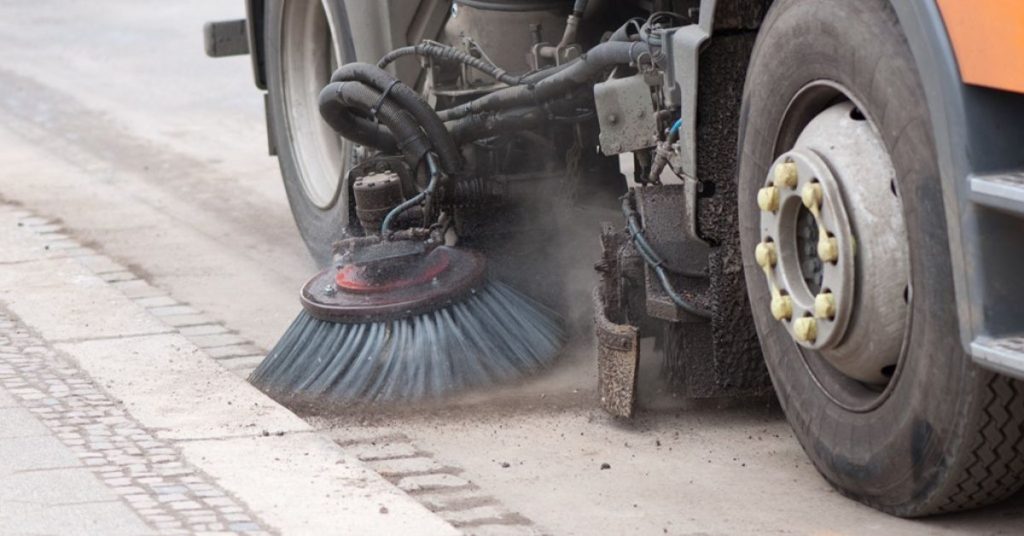Whether you have an asphalt driveway, expansive parking lot, or other type of roadway, maintenance plays an important role. One of the reasons why asphalt is a popular choice for driving is because it’s stable, reliable, and easy to work with. However, maintaining it over time requires work and an eye for detail.
Read on to learn eight signs that your asphalt needs to be repaved and how watching out for these signs can extend the lifespan of your asphalt surface.
Cracks and Potholes
One of the most obvious signs that your asphalt needs repaving is the presence of cracks and potholes. Cracks may start small, but they can quickly expand due to the infiltration of water, which weakens the underlying base layers. Temperature fluctuations, especially during the summer or winter, can lead to cracks forming more often and expanding faster.
Meanwhile, potholes are not only unsightly but also pose a safety hazard. These annoying holes can do a lot of damage to the tires and suspension systems of vehicles driving over them. Addressing cracks through sealing and maintenance can prevent them from developing into potholes, prolonging the life of your asphalt surface.
Faded Color and Stains
Another sign that you need to repave your asphalt is when you start to notice stains or fading colors. Over time, prolonged exposure to the sun and other elements can turn the deep black hue of fresh asphalt to a dull gray.
Stains from oil, gas, and other automotive fluids are also common on asphalt surfaces, particularly in parking lots. These substances can penetrate the asphalt, causing it to weaken and deteriorate over time. In addition to being unsightly, stains can accelerate the degradation of the pavement, leading to cracks and potholes.

Fatigue Cracking
Fatigue cracking, also known as alligator cracking, is a major indicator that you may need to repave your asphalt. This type of damage typically manifests as interconnected cracks resembling the scales of an alligator’s skin. Fatigue cracking results from repeated stress and load-bearing pressures that the asphalt surface cannot withstand over time.
Several factors contribute to the development of fatigue cracking, including heavy traffic loads, inadequate thickness of the asphalt layers, and poor structural support from the underlying base. These cracks start small but can quickly spread and interconnect, covering large sections of the pavement. When left unaddressed, fatigue cracking allows water to infiltrate the base layers, accelerating the deterioration process and potentially leading to more severe issues such as potholes and rutting.
Water Pooling
Water pooling is one of the more obvious signs that your asphalt needs to be repaved. As your asphalt shifts over time, it may dip and become uneven in places where water can build up and become stagnant. These pools of standing water can expedite the deterioration process by seeping into the asphalt and undermining its structural integrity.
The consistent presence of standing water after rain or irrigation can also lead to the proliferation of cracks and potholes. Water infiltration weakens the bond between asphalt layers, causing them to lose cohesion and further sink or break apart under stress. Over time, these issues can compromise the safety and usability of the pavement.
Warping and Buckling
Warping and buckling are serious signs that your asphalt surface needs immediate attention and possibly repaving. Warping occurs when sections of the asphalt distort, typically in wavy or rippled patterns. The most common causes of warping is heavy traffic loads over an extended time period or an unstable base layer. Warped asphalt isn’t just unsightly—the uneven texture makes it a potential safety issue for vehicles and pedestrians.
Buckling, on the other hand, involves the pavement lifting and forming bumps or ridges. Much like cracks, temperature fluctuations play a big role in causing this problem. You may also have to deal with uneven vegetation growth beneath the asphalt as weeds and other plants take hold and contribute to buckling.

Surface Erosion
Surface erosion is another significant indicator that it’s time to repave your asphalt. This type of degradation causes the surface of your asphalt to wear away, leading to a rough, uneven texture. The primary causes of surface erosion is exposure to the elements, particularly rain, wind, and UV radiation from the sun. Over time, these factors break down the asphalt binder, which is responsible for holding the aggregate together.
Other factors can also exacerbate surface erosion, including high volumes of traffic or other things directly scraping against the surface. Erosion not only diminishes the aesthetic appeal of your asphalt but also creates an uneven surface that can be hazardous for both vehicles and pedestrians. Small stones and loose debris resulting from erosion can lead to traction issues for vehicles. Additionally, pedestrians may find the uneven surface challenging to walk on, increasing the risk of trips and falls.
Ruts and Depressions
Ruts and depressions are troubling signs that your asphalt surface may require repaving. Ruts are grooves or channel-like indentations that develop primarily due to the repetitive motion of vehicle tires in the same paths, causing the asphalt to compact and form depressions. These imperfections often occur on high-traffic areas such as lanes, parking lots, and driveways.
Depressions, on the other hand, are localized, sunken areas on your asphalt surface that can vary in size and depth. They usually form as a result of poor subgrade preparation, drainage issues, or the natural settling of the ground beneath the pavement.
Failed Sealcoat
A failed sealcoat is a clear indicator that your asphalt surface may need repaving. Sealcoating is a protective layer applied to asphalt to shield it from the damaging effects of water, oils, and UV radiation. When this sealcoat fails, the asphalt becomes vulnerable to rapid degradation.
Signs of a failed sealcoat include peeling, flaking, or an uneven texture across the surface. These issues can arise due to improper application, using a low-quality sealant, or simply the natural wear and tear over time.
Don’t let your asphalt surfaces deteriorate further. Contact CPM Sweeping today to explore our comprehensive paving and sweeping solutions. Our experienced team is ready to help you maintain, repair, and revitalize your pavement, ensuring its durability and aesthetic appeal. From routine maintenance to complete repaving services, we’ve got you covered. Reach out to us for a consultation and take the first step toward extending the life of your asphalt.

